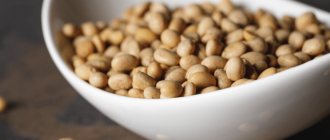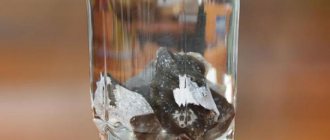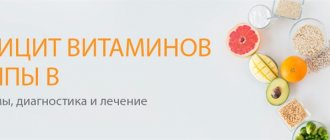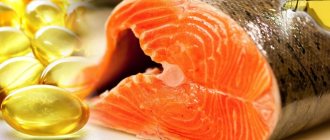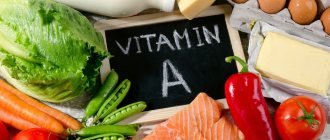Sex hormones control our entire lives, so hormonal balance is extremely important for the normal functioning of the body and overall well-being.
Without estrogens, a woman would not have a chance at motherhood, attractive appearance and sexual attractiveness. A normal amount of these hormones allows you to have strong bones, the necessary level of good cholesterol and an effectively functioning metabolism, preventing many dangerous diseases.
But in excess amounts, estrogens increase the risk of some dangerous diseases, including breast and ovarian cancer. Therefore, it is so important to study the level of sex hormones at different stages of life.
The role of estrogens
The content of the article
One of the most important sex hormones for women is estrogens, which are produced mainly in the ovaries, as well as in the placenta and adipose tissue. This is a group of hormones that include:
- estradiol;
- estrone;
- estriol.
The influence of estrogen on our body is very wide:
- affect the reproductive system;
- responsible for the development of mammary glands;
- regulate the menstrual cycle;
- promote the development of uterine muscles;
- increase vaginal hydration.
Estrogens also affect the urinary system, speed up metabolism, protect blood vessels, increase the concentration of “good” cholesterol, and stimulate bone mineralization.
However, estrogens can also influence the development of many serious diseases, including many types of cancer, including:
- breast cancer;
- endometrial cancer;
- ovarian cancer;
- lung cancer.
This is why it is so important to control the levels of these hormones. Excess estrogen, as well as deficiency, can have very serious health consequences.
Indications for taking phytoestrogens
Experts recommend phytoestrogens as an alternative to estrogen hormone replacement therapy during menopause, premenstrual syndrome, to reduce the risk of malignant tumors of the mammary glands in women, and prostate cancer in men, for the prevention of cardiovascular diseases. In addition, phytoestrogens are actively used by manufacturers of care cosmetics in products for problem skin and against baldness. Here they are useful as antioxidants and as substances that reduce sebum production.
Sometimes phytoestrogens need to be taken not only by women.
Symptoms of excess estrogen
Excess estrogen manifests itself in women as menstrual irregularities. It may appear as a result of diseases (for example, ovarian cancer) or poor nutrition, stress, heavy physical activity, as a hereditary factor. Excess estrogen leads to embolism and thrombosis, edema and the appearance of stones in the bile ducts. Thus, the symptoms that accompany increased levels of these hormones cannot be ignored.
You should definitely check your estrogen levels if you notice most of the following symptoms:
- swollen and tender breasts;
- bloating;
- weakened libido;
- irregular menstruation;
- headaches and migraines;
- mood swings;
- weight gain;
- hair loss;
- hands and feet are cold;
- chronic fatigue;
- problems with concentration and memory;
- sleep problems;
- frequent cramps, especially in the lower extremities;
- nausea and vomiting.
Estrogen levels can be reduced with medications and changes in your daily diet. It should exclude foods rich in natural estrogens, called phytoestrogens, that is, first of all, soy products, as well as meat from animals raised using synthetic hormones. Food packaging (plastic containers), as well as antibacterial soaps and dishwashing liquids, may contain triclosan, a substance similar in chemical formula to estrogen, which can disrupt the body's hormonal balance.
Are the benefits of phytoestrogens a myth?
The debate about the benefits of phytoestrogens has been going on for years. The results of most scientific studies have revealed either little effectiveness of drugs based on phytoestrogens, or none at all. But the harm from them has not yet been proven. Most likely, phytoestrogens are indeed capable of having an overall beneficial effect on a woman’s body, but it should be borne in mind that their effectiveness is extremely low compared to real estrogens, and in cases where hormone replacement therapy is required, preparations based on phytoestrogens are unlikely to help.
Symptoms of estrogen deficiency
Many factors contribute to low estrogen levels. Estrogen deficiency at a young age can cause underdevelopment of the ovaries, Swyer syndrome, Turner syndrome, and in older women it can be the result of premature ovarian failure or the onset of menopause. Estrogen deficiency can occur from anorexia, extreme physical activity, insufficient pituitary gland function, and alcohol abuse. Estrogen deficiency is manifested by symptoms of a mental and physical nature:
- irritability and decreased mood;
- problems with concentration;
- sleep disturbance;
- constant fatigue;
- rapid heartbeat;
- "tides";
- sweating;
- increase in body weight;
- dry eyes, skin, vagina;
- headaches;
- decreased libido.
Phytoestrogens in food
The easiest way to reduce the symptoms of menopause is to take phytoestrogens with food. This is understandable: you don’t have to wait until summer to collect herbs or run around the pharmacies looking for the magic ingredient. Just go to the supermarket and choose what you want to eat. True, you need to be careful, because the problem of weight during menopause does not disappear anywhere. By the way, we wrote a good article on this subject.
So, you can put it in your shopping cart:
- Coffee. Delicious, aromatic, invigorating. Definitely beans and good quality. After drinking the divine drink, an increase in estrogen is observed in the body. However, the appearance of ears under the butt and on the sides is also observed. Therefore, do not get carried away if you want to maintain your figure;
- Milk and derivatives. If you don’t like white drink straight from the cow, it’s time to worry about the issue of, if not love, then at least habit. Natural milk corrects estrogen levels well, due to which hot flashes occur less frequently and sexual activity increases. Cheese, fermented baked milk, kefir, sour cream and butter are healthy. The products listed are effective if purchased on a farm, not in a convenience store;
- Apricots are a tasty helper. In winter you can chew dried apricots - they are no less useful;
- Lentils . Here a joke-twister suggests itself: the rye is rye, the oats are oats, the lentils are lentils. This culture is the most useful product for menopause. It controls the level of phytohormones, contains protein and tryptophan. The latter helps get rid of stress and depression better than pills;
- Beans, peas and chickpeas are excellent substitutes for lentils - you can eat them several times a week without affecting your weight;
- Pumpkin. Few people love pumpkin: of the women we interviewed, we did not meet a single connoisseur. But in vain! Pumpkin pulp and seeds are a powerful plant hormone regulator.
- Barley, bran, millet . Usually shelves with boxes of crops are not empty - buyers treat them with disdain and a certain degree of suspicion. Not only is it cheap, but there is also a well-established belief that grains are used to feed livestock. Very in vain. Cereals allow you to get rid of hot flashes and sweating, are filling and low in calories.
Phytoestrogens are also found in sunflower seeds, fruits, vegetables, beef, walnuts, mackerel, and seaweed. And secretly: in beer. We're not advocating starting an alcoholic life right now, but a glass of draft beer on a Saturday night certainly won't hurt. Barley and malt protect women's health.
Estrogen studies
The appearance of symptoms characteristic of a lack or excess of estrogen should be a signal that it is necessary to examine the level of these hormones in the blood. This study is carried out on an empty stomach, that is, approximately 8 hours after the last meal.
The norm of estrogen for women
| Hormone | Phase | Normal indicator |
| Estrone | during the childbearing period | 17-200 ng/l |
| during the postmenopausal period | 7-40 ng/l | |
| Estradiol | in the follicle maturation phase | 30-120 ng/l (110-440 pmol/l) |
| during ovulation | 130-370 ng/l (477-1358 pmol/l) | |
| during the luteal phase | 70-250 ng/l (257-917 pmol/l) | |
| during the postmenopausal period | <10 ng/l | |
| Estriol | below 80 ng/l |
Normal estrogen levels for men
| Hormone | Normal indicator |
| Estrone | 10-60 ng/l |
| Estradiol | 10-40 ng/l |
| Estriol | <160 ng/l |
Hormonal drugs
With severe estrogen deficiency, drug intervention is often unavoidable. Among the most popular drugs that can increase the level of female hormones are:
- Tocopherol – contains vitamin E, which increases progesterone and estrogen;
- Premarin - created on the basis of estrogen of animal origin (specifically, the hormone is taken from horses);
- Proginova - contains synthetically created human estrogen;
- Hemafimin is based on the action of pantohematogen, which is quickly absorbed by the body and provokes the production of estrogen. The main active ingredient is obtained from the blood of female East Asian deer - marals.
If you discover symptoms of hormonal imbalance, self-medication is dangerous. Excess estrogen is no less harmful to the female body than its deficiency. Only an endocrinologist can prescribe a diet, and especially medications, after the patient has undergone a number of clarifying tests.
Estrogens in food
If we have estrogen deficiency, then it is worth changing our daily diet. Where is the most estrogen? Particularly rich in phytohormones:
- vegetables (broccoli, Brussels sprouts, cabbage, cauliflower, legumes, onions, garlic);
- fruits and berries (citrus fruits, grapes, apples, pears, black currants);
- seeds;
- nuts;
- grains such as barley, rye and wheat;
- in many herbs, for example, clover, alfalfa, motherwort, valerian, sage.
If you find an error, please select a piece of text and press Ctrl+Enter
Grocery list
The richest in beneficial phytoestrogens:
- 1Flax seeds, sunflower seeds, sesame seeds.
- 2 Legumes: soybeans, natto, tofu, sufu, soy milk, miso, fuju, beans, beans, peas (up to 40-50 mg of isoflavones per 100 g). Bioadditives are also created based on soy (for example, the drug EstroSoy).
- 3Cereal crops, especially their sprouts.
- 4 Greens: parsley, celery, spinach.
- 5 Vegetables: cabbage, broccoli, carrots.
- 6Grapes, green tea.
What is important for women is that all vegetables, fruits, natural (unrefined) grains, legumes, nuts and seeds are rich in phytoestrogens.
Their consumption in moderate quantities has a beneficial effect on the body without causing any harm.
Herbs that contain natural phytoestrogens:
- 1Red Clover.
- 2 Cosimifuga racemosus (black cohosh).
- 3 Milk thistle.
- 4Burdock.
- 5Hop cones.
- 6Fennel.
- 7 Hog uterus.
- 8 Oregano.
- 9Sage.
Based on these plants, herbal infusions and decoctions, dietary supplements in the form of tablets and capsules (see on iHerb, Vitacost), which help with menopause and menopause, are prepared.
It is important to understand that they cannot fully replace hormone replacement therapy, but they can reduce unpleasant symptoms.
Mechanism of action
In their structure, phytoestrogens are similar to estradiol. Due to this, they can act as both estrogens and antiestrogens. These substances were discovered in 1926, but until the 1950s their effects remained unexplored. For the first time, it was noticed that sheep that graze on pastures rich in clover (a plant with a lot of phytoestrogens) have reduced fertility.
The main mechanism of action of phytoestrogens is binding to estrogen receptors, which exist in two types: alpha and beta. Many plant estrogens have a much greater affinity for beta receptors. The effect of phytoestrogens on the body is approximately 500-1000 times weaker than the effect of human hormones.
The main structural elements of the plant hormone molecule, which explain its high affinity for estrogen, are:
- phenol ring;
- an isoflavone ring that mimics the estrogen ring at the site of contact with the receptor;
- low molecular weight of the compound, similar to female sex hormones;
- the distance between the two hydroxyl groups of the isoflavone core, which is similar to estradiol.
In addition to the feminizing effect, phytohormones can also have an antiestrogenic effect. In a healthy woman with normal hormonal levels, plant-derived estrogens compete with her personal hormones. They occupy those receptors that could use natural hormones.
Dried fruits
Dried fruits are nutrient-rich, delicious and easy to eat as a snack.
They are also a potent source of various phytoestrogens (14).
Dates, prunes, and dried apricots are among the foods richest in phytoestrogens (15).
Moreover, dried fruits are rich in fiber and other important nutrients, making them a healthy snack.
Summary:
Dried fruits are a powerful source of phytoestrogens. Dried apricots, dates and prunes are among the dried fruits with the highest phytoestrogen content.
Berries
The berries have long been recommended for their many impressive health benefits.
They are rich in vitamins, minerals, fiber and beneficial plant compounds, including phytoestrogens.
Strawberries, cranberries, and raspberries are especially rich sources (3, 23, 24).
Summary:
Some berries are rich in phytoestrogens, especially strawberries, cranberries and raspberries.
Herbs with plant estrogens
Herbs containing plant estrogens have not only a hormonal, but also a general strengthening effect. These include: clover heads, sage, licorice, verbena, St. John's wort and alfalfa. Infusions of these herbs are taken orally, or hair rinses are prepared from them.
Red clover. Phytoestrogens from clover flowers and grass contain isovlavone and coumestane compounds. There are no studies yet that would show that this plant can be safely used to prevent menopausal disorders.
Licorice. The roots of this plant contain an isoflavone called glabridin. In small doses it stimulates the proliferation of cancer cells, and in high doses it suppresses them.
Alfalfa. Estrogens in alfalfa herbs are represented by coumestrol and a small amount of formononetin. Like red clover heads, this grass can cause reproductive problems in sheep. The effect of this plant on people is also not well understood.
Linen. This herb contains large quantities of female phytohormones of the lignan group. In the intestines of the human body, herbal estrogens are converted into enterodiol and enterolactone.
Isoflavone table
Food sources of isoflavones (µg/g)
| Food group | Total isoflavones | Daijouin | Genistein | Glycetin |
| Soybeans | 1176-4215 | 365-1355 | 640-2676 | 171-184 |
| Roasted soybeans | 2661 | 941 | 1426 | 294 |
| Soy flour | 2014 | 412 | 1453 | 149 |
| Protein isolate | 621-987 | 89-191 | 373-640 | 159-156 |
| Tofu | 532 | 238 | 245 | 49 |
| Soy hot dog | 236 | 55 | 129 | 52 |
| Soy bacon | 144 | 26 | 83 | 35 |
| Cheddar cheese | 43-197 | 0-83 | 4-62 | 39-52 |
| Mozzarella cheese | 123 | 24 | 62 | 52 |
| Tofu yogurt | 282 | 103 | 162 | 17 |
| Soy drink | 28 | 7 | 21 | — |
Tofu
Tofu is made from coagulated soy milk, pressed into firm white blocks. It is a popular source of plant protein, especially in vegan and vegetarian diets.
It is also a concentrated source of phytoestrogens, mainly isoflavones.
Tofu has the highest level of isoflavones of any soy product, including soy formulas and soy drinks (30).
Summary:
Tofu is made from soy milk pressed into firm white blocks. It is a rich source of isoflavones, a type of phytoestrogen.
Wheat bran
Wheat bran is another concentrated source of phytoestrogens, especially lignans (25).
Some long-standing human studies show that fiber-rich wheat bran reduces serum estrogen levels in women (26, 27, 28).
However, these results were likely due to the high fiber content of wheat bran and not necessarily the lignan content (29).
Ultimately, more research is needed to fully understand the effects of wheat bran on circulating estrogen levels in humans.
Summary:
Wheat bran is rich in phytoestrogens and fiber, which can reduce estrogen levels. However, more research is needed.
Tempe
Tempeh is a fermented soy product and a popular vegetarian meat substitute.
This product is made from soybeans that have been fermented and pressed into hard, dense pellets.
Tempeh is not only an excellent source of protein, prebiotics, vitamins, and minerals, but also a rich source of phytoestrogens, especially isoflavones (33).
Summary:
Tempeh is a vegetarian meat substitute made from fermented soybeans. Like other soy products, tempeh is rich in isoflavones.
